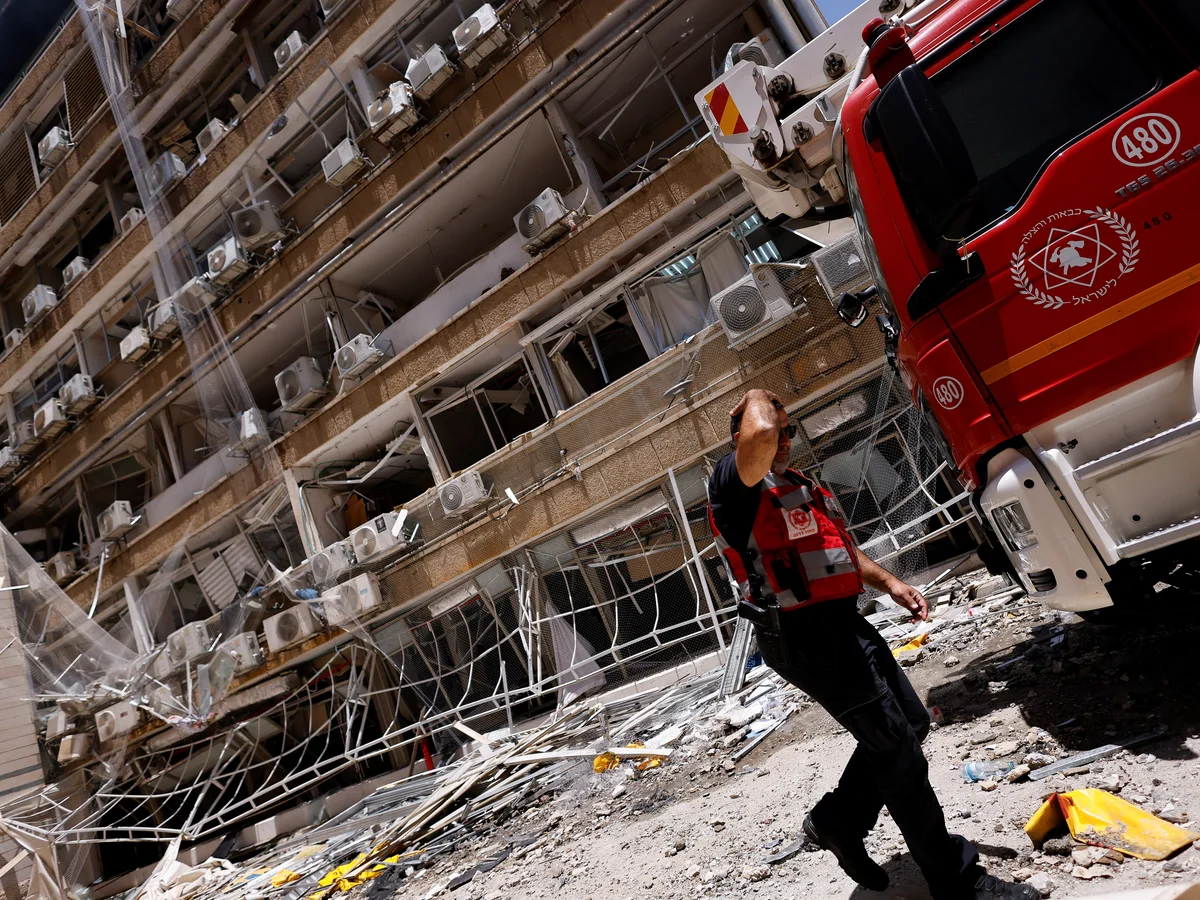Israel has accused Iran of launching a missile fitted with a cluster bomb warhead, raising serious humanitarian and legal concerns in what marks the first known use of such a weapon in the current conflict.
According to Israel Defense Forces (IDF), the missile, which detonated mid-air approximately 7 kilometers above the ground, released around 20 smaller submunitions across an estimated 8-kilometer zone. One of these bomblets landed on a residential home in Azor, a town near Tel Aviv, causing property damage but no reported casualties.
Cluster munitions function differently from standard warheads. Rather than delivering a single targetted explosion, they are designed to break apart in the air, scattering multiple mini-explosives—known as submunitions—across a wide area. These weapons are intended to strike dispersed targets but are widely criticised for being unpredictable and leaving behind unexploded devices.
Israel Warns Public of Unexploded Munitions After Missile Strike
In a public safety message on X (formerly Twitter), Israel’s Home Front Command urged civilians not to approach unidentified objects, warning that some of the munitions might not have detonated. “This morning we experienced a missile strike capable of dispersing small munitions… Do not touch any fallen objects or suspicious objects. Immediately call 100,” the advisory stated.
Such unexploded remnants are a long-term danger. Because submunitions often fail to explode on impact, they can remain active for years, posing deadly risks to anyone who encounters them—especially in civilian areas. “They are egregious weapons with their wide-area destruction, especially if used in a civilian populated area,” said Daryl Kimball, executive director of the Arms Control Association. He added that these weapons often result in unexploded ordnance that lingers long after combat ends.
Military officials in Israel argue that this type of missile attack signals an intent to cause widespread civilian harm. “The terror regime seeks to harm civilians and even used weapons with wide dispersal in order to maximise the scope of the damage,” said Israeli military spokesperson Brigadier General Effie Defrin during a press briefing.
Cluster Bomb Use in Israel Draws Parallels to Deadly Ukraine Strike
Though not the first use of cluster bombs in modern conflicts, their appearance in this war is alarming. Russia’s use of similar weapons in Ukraine earlier this year drew international condemnation. The March attack on the Ukrainian town of Dobropillia, for instance, resulted in 11 deaths and over 40 injuries.
International opposition to cluster munitions led to the establishment of the 2008 Convention on Cluster Munitions, which prohibits their use, production, transfer, and stockpiling. The treaty has been signed by over 100 countries, but major military powers—including Iran, Israel, the United States, and Russia—have not joined.
Despite these legal gaps, pressure continues to mount against the deployment of cluster bombs. Kimball cautioned that given the inaccuracy of some Iranian missiles, the use of such a warhead would almost certainly affect civilians more than military targets.
As of now, Iranian and Israeli officials have not issued further comments regarding the incident.


